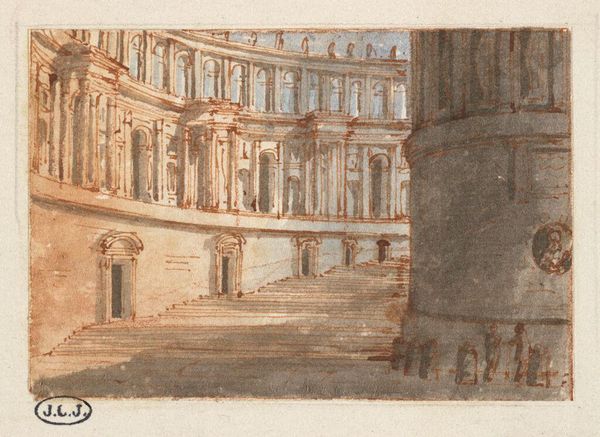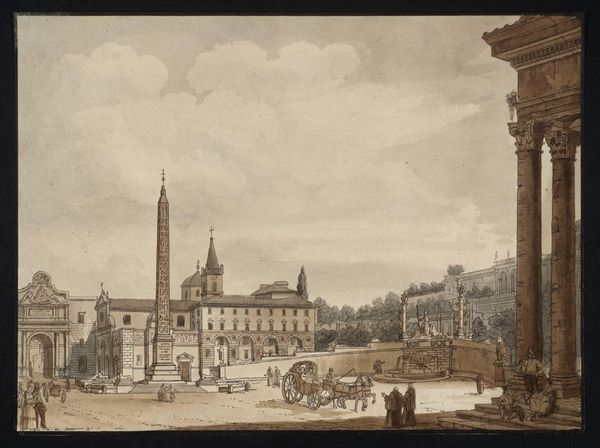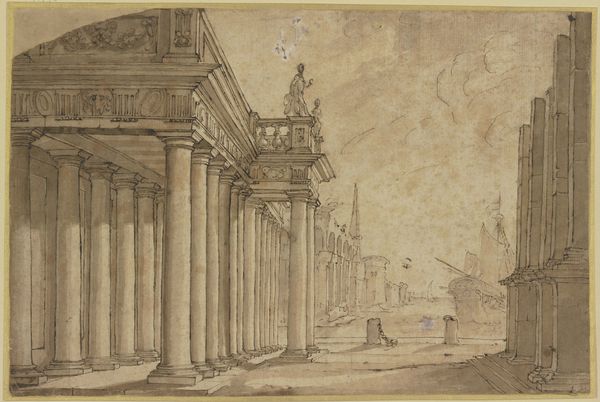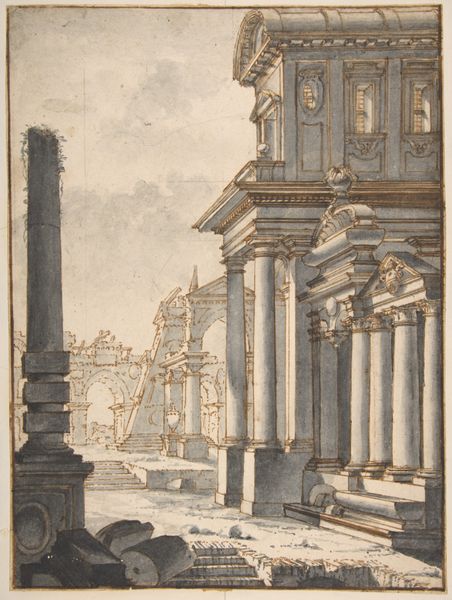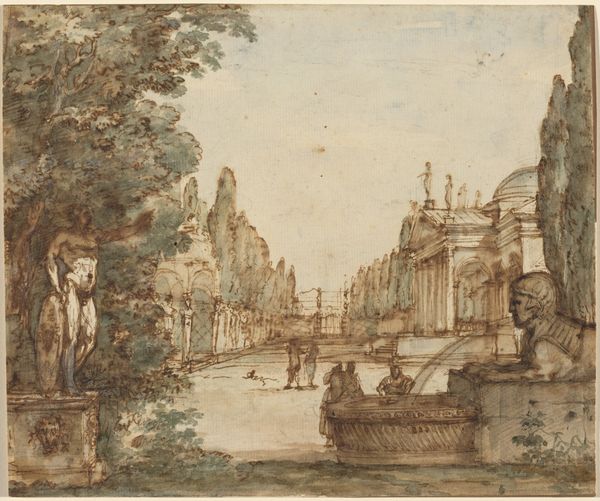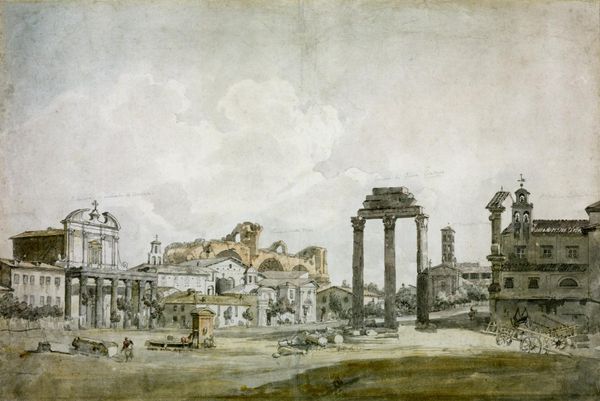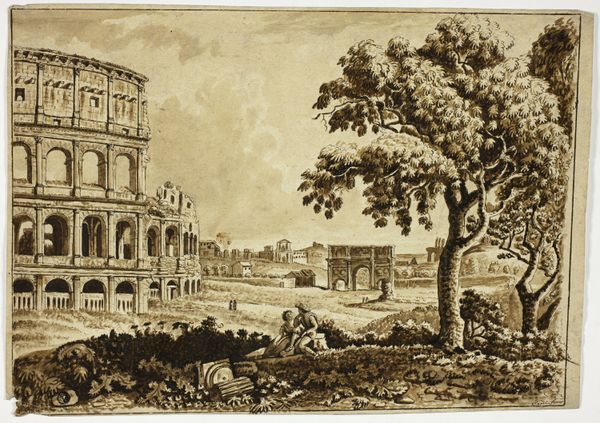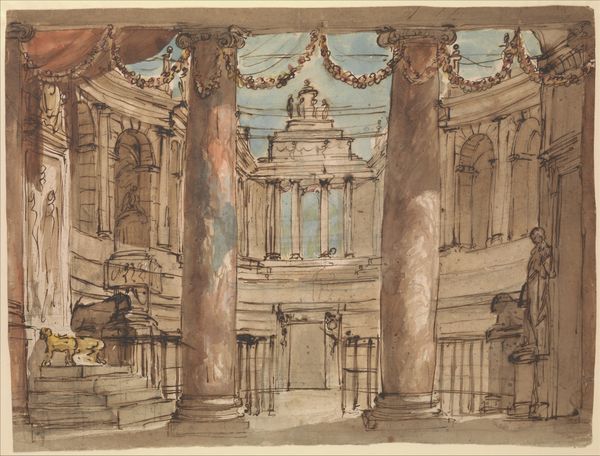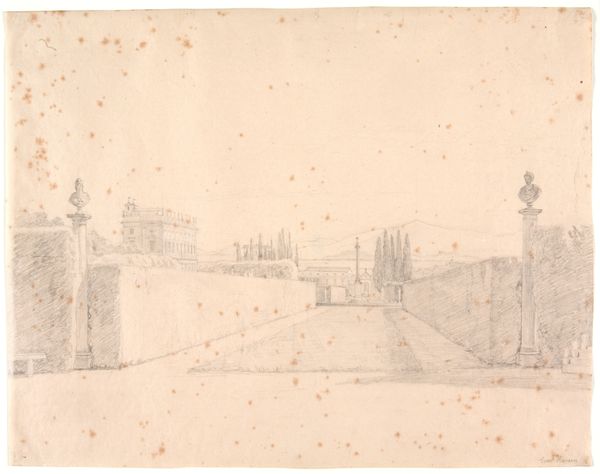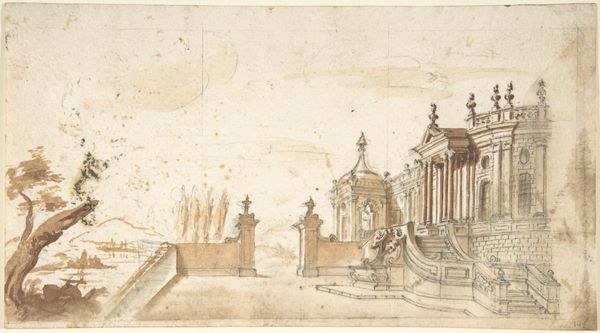
Dimensions: 6 1/4 x 8 7/16 in. (15.88 x 21.43 cm) (image)
Copyright: Public Domain
Curator: This watercolor and charcoal drawing, entitled "Stage Design - Set Proposal for a Ballet," was created around 1790 by Bernardino Galliari and now resides at the Minneapolis Institute of Art. Editor: Its mood is strikingly melancholic, almost sepulchral. The starkness of the charcoal, coupled with muted watercolor washes, suggests a dreamscape on the verge of disappearing. Curator: Precisely! Galliari uses these materials to orchestrate a composition reliant on receding planes and strategically placed verticals—the trees—to guide the eye toward the implied performance space at its center. Editor: It speaks volumes about spectacle. I am curious about Galliari's process: Was this watercolor underpainting completed first before adding the texture through charcoal or did the artist combine both media together for different sections of the proposed backdrop? Also, did this become an actual staging or just remained an idea on paper? The labor embedded here hints towards scenography being crucial and an elaborate component in the theatrical productions of the late eighteenth century. Curator: Interesting points. Focusing on its formalism, notice how Galliari utilizes the architectural structure to create a complex interplay of light and shadow, enhanced by the limited tonal range. The design embraces Neoclassical ideals, such as the temple-like building on the set, but there are some traces of the theatrics found within Baroque tradition. Editor: For me, the social history of such images should be studied to evaluate whether designs like this challenged conventions, explored class relations, or proposed how dance reflected broader aesthetic principles circulating at the time. Who produced and consumed theatrical design, ballet, stagecraft during that period? What would they learn about those drawings that remain elusive today? Curator: Undoubtedly, understanding its contemporary social context is key, and yet its visual rhetoric provides crucial access. How its architecture and surrounding landscape speaks in neoclassical language about balance, proportion, and order... Editor: The materials reflect status: consider the labor required, cost of stage productions, and that of the set itself. It encourages a more nuanced and informed understanding about artistry involved. Curator: Your perspectives always add necessary dimension to my own structural readings! Editor: Indeed. To look into design through combined lenses—formal composition as well as production means—certainly unlocks many other layers of meaning.
Comments
No comments
Be the first to comment and join the conversation on the ultimate creative platform.
